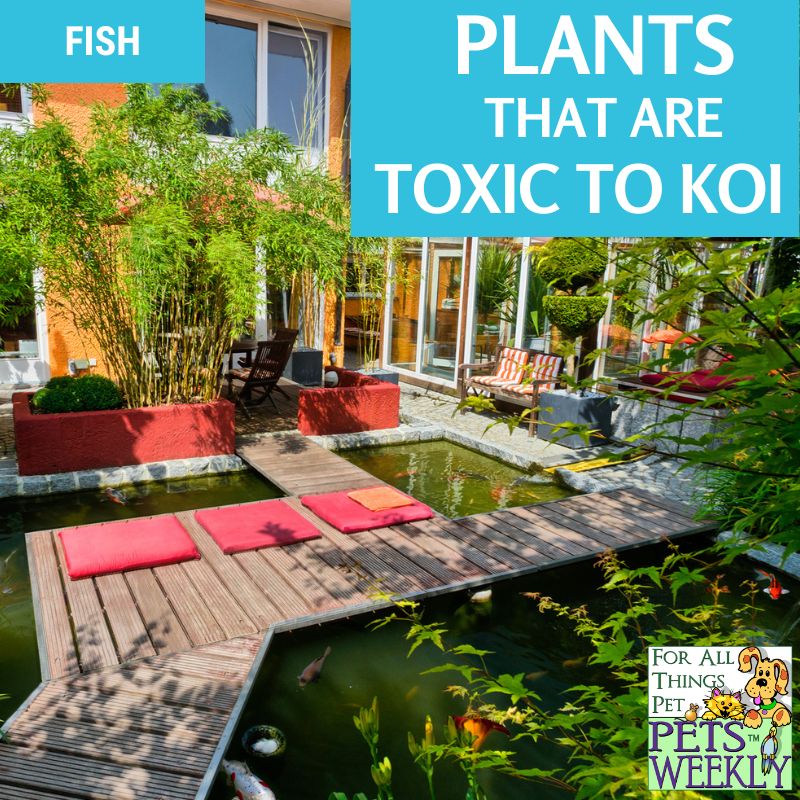Koi, with their majestic presence and shimmering scales, are a cherished addition to any pond. However, transforming your pond into a paradise for these graceful fish requires careful planning. One crucial aspect is understanding the dangers posed by toxic plants. This guide will help you navigate the world of plants toxic to koi. After all, we want to create a safe and flourishing environment where your koi can thrive.
Here’s a very short list to help you navigate the world of safe and unsafe pond plant companions:
Aquatic Plants that are Toxic to Koi
- Water Hyacinth (Eichhornia crassipes): While beautiful, this invasive species can rapidly overgrow, depleting oxygen and blocking sunlight, harming koi.
- Water Lily (Nymphaea spp.): Certain water lilies, particularly Tiger Lotus (Nymphaea lotus) and Yellow Water Lily (Nymphaea odorata), can be toxic if ingested in large quantities. This is due to the presence of alkaloids.
- Choose safer varieties like Fragrant Water Lily (Nymphaea odorata) or Stargazer Water Lily (Nymphaea stellata).
- Pickerelweed (Pontederia cordata): Though generally safe, some species like White Pickerelweed (Pontederia cordata var. alba) contain toxins that can irritate koi gills.
- Arrowhead (Sagittaria spp.): While not inherently toxic, some arrowhead varieties, like Giant Arrowhead (Sagittaria latifolia), can produce sharp tubers that can injure koi.
Terrestrial Plants that are Toxic to Koi
Creating a beautiful and vibrant koi pond definitely requires incorporating plants for shade, safety and beauty. But, it’s crucial to choose the right ones. Many plants harbor toxins harmful to your koi fish. Many seemingly innocuous plants harbor potent toxins that can be detrimental, even fatal, to your beloved koi. This is true even if the plants are based on land.
- Azalea (Rhododendron spp.): All parts of this plant are toxic, especially the leaves and flowers. They contain grayanotoxins that can cause liver failure and death in koi.
- Rhododendron (Rhododendron spp.): Similar to azaleas, all parts of rhododendrons are toxic. They can cause the same health problems for koi.
- Yellow Jessamine (Gelsemium sempervirens): All parts are highly toxic. These plants contain alkaloids that can cause paralysis and death in koi if ingested.
- Hydrangea (Hydrangea macrophylla): While the flowers are mildly toxic, the leaves and roots can cause stomach upset and lethargy in koi.
- Oleander (Nerium oleander): Extremely toxic. This makes us especially sad for our fellow Arizonians as it is a beautiful plant. However, all parts of the oleander plant contain cardiac glycosides. These can disrupt heart rhythm and be fatal if ingested by koi (or any pets).
- Sago Palm (Cycas revoluta): The seeds contain cycasin, a toxin that can cause liver failure and death in koi.
- Castor Bean (Ricinus communis): All parts, especially the seeds, are highly toxic to koi and ingestion can be fatal.
- Daffodil (Narcissus spp.): All parts contain lycorine, an irritant that can cause vomiting and diarrhea in koi.
- Lily of the Valley (Convallaria majalis): All parts, including the water used to store the flowers, contain highly toxic cardiac glycosides, which can be fatal to koi.
Rememer that many of these plants are also toxic to pets. This is especially true of the Sago Palm, Daffodils, lilies and many others.
Remember, knowledge is your koi’s best defense. By staying informed about toxic plants and prioritizing your koi’s well-being, you can cultivate a healthy pond sanctuary. Your cherished koi will want to enjoy their home for many years to come.
Always research thoroughly: Before introducing any plant, aquatic or terrestrial, near your pond, research its potential toxicity to koi. Online resources and consultations with local nurseries or pet stores specializing in koi ponds can be helpful.
You may also want to pick up your copy of Koi for Dummies if you’re new to the hobby!
Beware of “Safe” Lists
While helpful, lists of “safe” plants for koi ponds may not be exhaustive. New research can reveal previously unknown toxins, and individual plant variations can exist. Monitor your koi for any signs of illness after introducing new plants. These symptoms include lethargy, loss of appetite, unusual swimming behavior, or difficulty breathing.
When in doubt, leave it out!
If you’re unsure about a plant’s safety, err on the side of caution and avoid adding it to your pond. But, if you want to see a much larger list, please check out the Midwest Pond & Koi Society!
By following these guidelines and prioritizing the well-being of your koi, you can create a beautiful and healthy pond environment. Remember, a little research and caution can go a long way in keeping your prized koi safe and happy.

